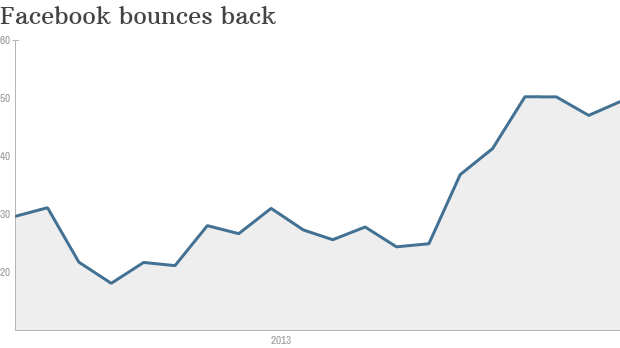Since it is Black-Friday, iStock thought we would have a little fun too since we aren't at the stores getting any of those super-deals. We are going to turn to the trusty stock screener to identify our favorite Retail Stock, how fitting, right?
The first thing we need to do is narrow our target list to Retail and Wholesale companies, which puts 390 potential candidates into the top of the funnel.
Retail can be a tough, hard-nosed competitive environment, so some of the most important things iStock is looking for include profits and margins. If it cost too much to get it out the door and management can't be efficient enough to turn a profit, we don't want it.
Surprisingly, or maybe not, the number of Retailers than earned more than zero cents per-shares in the trailing 12-months is just 220, eliminating 170 companies. Obviously, each of the 220 has positive net margins; we'll come back to margins as a tie-breaker if necessary.
Top 5 Heal Care Stocks To Buy For 2014: Patterson Companies Inc.(PDCO)
Patterson Companies, Inc. operates as a distributor serving the dental, companion-pet veterinarian, and rehabilitation supply markets in North America. Its Dental Supply segment provides consumable dental supplies, such as x-ray film and solutions; impression and restorative materials; hand instruments; sterilization products; anesthetics; infection control products, including protective clothing, gloves, and facemasks; paper, cotton, and disposable products; toothbrushes; dental accessories; printed office products, office filing supplies, and practice management systems; x-ray machines, handpieces, dental chairs and handpiece control units, diagnostic equipment, dental lights, compressors, chair-side restoration systems, and inter-oral cameras; practice management and clinical software; hardware and networking solutions; and patient education solutions. The company?s Veterinary Supply segment offers consumable supplies, such as lab supplies, paper goods, needles and syr inges, gauze and wound dressings, sutures, latex gloves, and orthopedic and casting products; pharmaceuticals comprising anesthetics, antibiotics, ointments, and nutraceuticals; diagnostics; biologicals, including vaccines and injectibles; and equipment and software. Its Rehabilitation Supply segment provides dressing and grooming devices, and toileting, dining, and bathing aids; braces, splints, and orthotics; exercise bands, putty, weight balls, and mats; walkers, canes, and wheelchair accessories; rolls, wedges, seating and standers, and mobility assistance products; motor stimulation products; products for heating and cooling therapies, electrical stimulation, laser, ultrasound, paraffin, iontophoresis, and therapeutic creams and lotions; and rehabilitation equipment and software. The company was formerly known as Patterson Dental Company and changed its name to Patterson Companies, Inc. in June 2004. Patterson Companies, Inc. was founded in 1877 and is based in St. Paul , Minnesota.
Advisors' Opinion: - [By Seth Jayson]
Patterson Companies (Nasdaq: PDCO ) reported earnings on May 23. Here are the numbers you need to know.
The 10-second takeaway
For the quarter ended April 27 (Q4), Patterson Companies met expectations on revenues and met expectations on earnings per share.
- [By Eric Volkman]
Patterson (NASDAQ: PDCO ) has elected not to raise its quarterly shareholder payout. The company today declared a regular stock dividend of $0.16 per share, to be paid on July 26 to shareholders of record as of July 11. That amount matches the company's previous distribution, which was paid at the end of April. Before that, Patterson handed out $0.14 per share.
Top 5 Heal Care Stocks To Buy For 2014: British/Swiss Franc(UN)
UNILEVER N.V. operates as a fast-moving consumer goods company in Asia, Africa, Europe, and the Americas. It offers personal care products, including skin care and hair care products, deodorants, and oral care products under the brand names of Axe, Brylcreem, Dove, Fissan, Lifebuoy, Lux, Pond's, Radox, Rexona, Signal & Close Up, Simple, St Ives, Sunsilk, TRESemm� Vaseline, and VO5. The company also provides home care products comprising laundry tablets, powders and liquids, soap bars, and various cleaning products under the Cif, Comfort, Domestos, Omo, Radiant, Sunlight, and Surf brand names. In addition, it offers food products consisting of soups, bouillons, sauces, snacks, mayonnaise, salad dressings, margarines and spreads, as well as cooking products, such as liquid margarines. The company markets its food products under the brand names of Becel/Flora, Bertolli, Blue Band, Rama, Hellmann?s, Amora, and Knorr. Further, it provides refreshment products, which include ice cream, tea-based beverages, weight-management products, and nutritionally enhanced staples under the brand names of Heartbrand, Lipton, and Slim?Fast. UNILEVER N.V. sells its products through its own sales force, as well as through independent brokers, agents, and distributors to chain, wholesale, co-operative and independent grocery accounts, food service distributors, and institutions. The company, formerly known as Naamlooze Vennootschap Margarine Unie, was founded in 1927 and is based in Rotterdam, the Netherlands. Unilever N.V. is a subsidiary of The Unilever Group.
Top 10 Companies To Own For 2014: Ossen Innovation Co. Ltd.(OSN)
Ossen Innovation Co. Ltd. engages in the design, engineering, manufacture, and sale of plain surface prestressed, rare earth coated, and zinc coated prestressed steel materials in the People?s Republic of China. The company primarily offers plain surface, indented, and helical rib PC wires, as well as rare earth coated PC strands. Its materials are used in the construction of railways, highways, bridges, buildings, and other infrastructure projects. The company markets its products under the Ossen brand name. It also exports its products to the United States, Canada, Spain, South Korea, Taiwan, Australia, and Saudi Arabia. The company is headquartered in Shanghai, the People?s Republic of China.
Top 5 Heal Care Stocks To Buy For 2014: PeppinNini Minerals Ltd(PNN.AX)
Pepinnini Minerals Limited engages in the exploration and development of mineral resource properties in Australia. The company explores for nickel, copper, gold, lead, zinc, uranium, and other mineral commodities. It holds interests in 39 exploration tenements covering approximately 15,795 square kilometers in the Curnamona and Musgrave Provinces of South Australia; the Georgetown, Woolgar Goldfield, and Drummond Basin of north Queensland; and the Robinson Range area of Midwest Western Australia and Salta Province, Argentina. The company also holds an 83 hectare mining lease located in the Woolgar Goldfield of north Queensland. Pepinnini Minerals Limited was incorporated in 2002 and is based in Adelaide South Australia.
Top 5 Heal Care Stocks To Buy For 2014: Ultralife Corporation(ULBI)
Ultralife Corporation offers products and services ranging from portable and standby power solutions to communications and electronics systems. It operates through three segments: Battery & Energy Products; Communications Systems; and Energy Services. The Battery & Energy Products segment offers lithium 9-volt, cylindrical, and various other non-rechargeable batteries; and rechargeable batteries, uninterruptable power supplies, and accessories, such as cables. The Communications Systems segment provides power supplies, cable and connector assemblies, RF amplifiers, amplified speakers, equipment mounts, case equipment, integrated communication system kits, charging systems, and communications and electronics systems design. The Energy Services segment engages in the design, manufacture, installation, and maintenance of standby power and systems. The company offers its products under Ultralife Batteries, McDowell Research, RedBlack Communications, AMTI, Stationary Power Serv ices, U.S. Energy Systems, RPS Power Systems, and ABLE brands. It serves government, defense, and commercial customers internationally. Ultralife Corporation sells its products through original equipment manufacturers, industrial and retail distributors, and national retailers, as well as directly to U.S. and international defense departments. The company was formerly known as Ultralife Batteries, Inc. and changed its name to Ultralife Corporation in June 2008. Ultralife Corporation was founded in 1990 and is headquartered in Newark, New York.
 Since his election last year, Mexican President Peña Nieto has been pushing a strong reformist agenda through his country’s Congress, notably the liberalization of Mexico’s energy patch.
Since his election last year, Mexican President Peña Nieto has been pushing a strong reformist agenda through his country’s Congress, notably the liberalization of Mexico’s energy patch.
 Getty Images
Getty Images 

 Popular Posts: 8 “Triple A” Stocks to Buy17 Oil and Gas Stocks to Sell Now7 Biotechnology Stocks to Buy Now Recent Posts: 5 Stocks With Bad Analyst Earnings Revisions — VCRA SUNE BONT VRTX PSEM 12 “Triple F” Stocks to Sell 7 Machinery Stocks to Buy Now View All Posts
Popular Posts: 8 “Triple A” Stocks to Buy17 Oil and Gas Stocks to Sell Now7 Biotechnology Stocks to Buy Now Recent Posts: 5 Stocks With Bad Analyst Earnings Revisions — VCRA SUNE BONT VRTX PSEM 12 “Triple F” Stocks to Sell 7 Machinery Stocks to Buy Now View All Posts